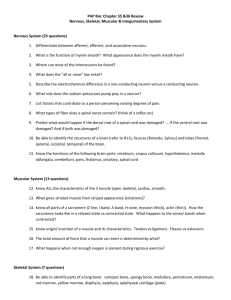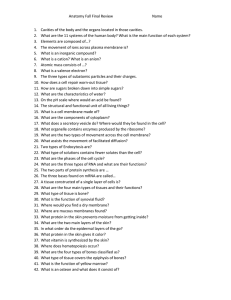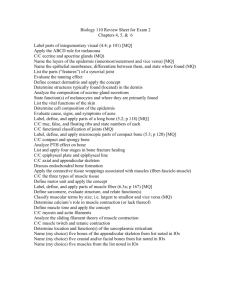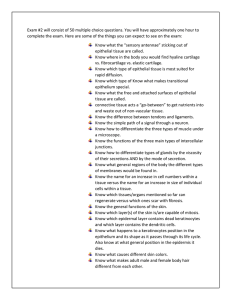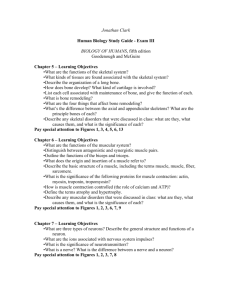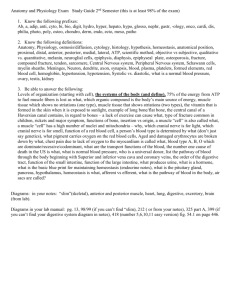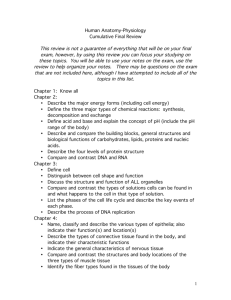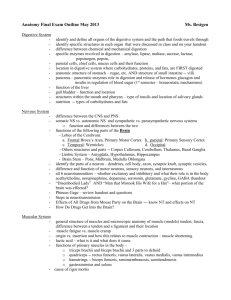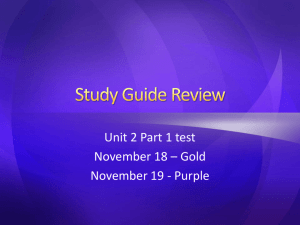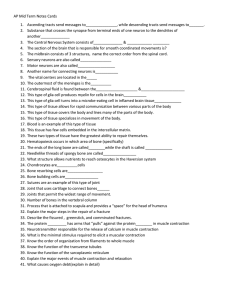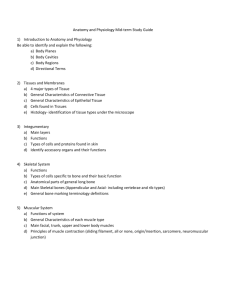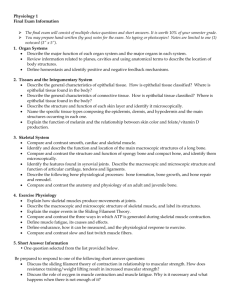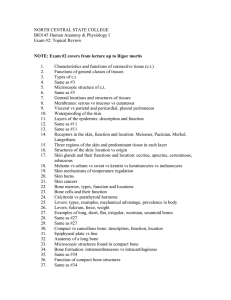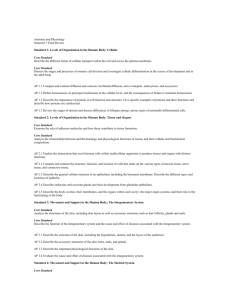Midterm Review
advertisement
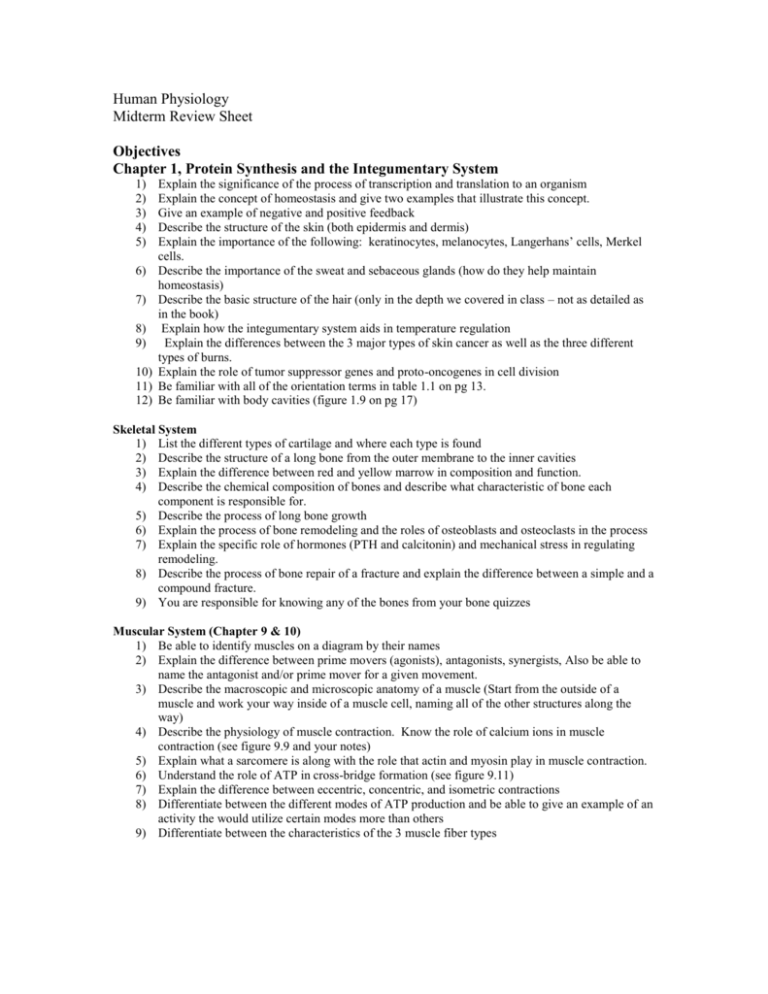
Human Physiology Midterm Review Sheet Objectives Chapter 1, Protein Synthesis and the Integumentary System 1) 2) 3) 4) 5) 6) 7) 8) 9) 10) 11) 12) Explain the significance of the process of transcription and translation to an organism Explain the concept of homeostasis and give two examples that illustrate this concept. Give an example of negative and positive feedback Describe the structure of the skin (both epidermis and dermis) Explain the importance of the following: keratinocytes, melanocytes, Langerhans’ cells, Merkel cells. Describe the importance of the sweat and sebaceous glands (how do they help maintain homeostasis) Describe the basic structure of the hair (only in the depth we covered in class – not as detailed as in the book) Explain how the integumentary system aids in temperature regulation Explain the differences between the 3 major types of skin cancer as well as the three different types of burns. Explain the role of tumor suppressor genes and proto-oncogenes in cell division Be familiar with all of the orientation terms in table 1.1 on pg 13. Be familiar with body cavities (figure 1.9 on pg 17) Skeletal System 1) List the different types of cartilage and where each type is found 2) Describe the structure of a long bone from the outer membrane to the inner cavities 3) Explain the difference between red and yellow marrow in composition and function. 4) Describe the chemical composition of bones and describe what characteristic of bone each component is responsible for. 5) Describe the process of long bone growth 6) Explain the process of bone remodeling and the roles of osteoblasts and osteoclasts in the process 7) Explain the specific role of hormones (PTH and calcitonin) and mechanical stress in regulating remodeling. 8) Describe the process of bone repair of a fracture and explain the difference between a simple and a compound fracture. 9) You are responsible for knowing any of the bones from your bone quizzes Muscular System (Chapter 9 & 10) 1) Be able to identify muscles on a diagram by their names 2) Explain the difference between prime movers (agonists), antagonists, synergists, Also be able to name the antagonist and/or prime mover for a given movement. 3) Describe the macroscopic and microscopic anatomy of a muscle (Start from the outside of a muscle and work your way inside of a muscle cell, naming all of the other structures along the way) 4) Describe the physiology of muscle contraction. Know the role of calcium ions in muscle contraction (see figure 9.9 and your notes) 5) Explain what a sarcomere is along with the role that actin and myosin play in muscle contraction. 6) Understand the role of ATP in cross-bridge formation (see figure 9.11) 7) Explain the difference between eccentric, concentric, and isometric contractions 8) Differentiate between the different modes of ATP production and be able to give an example of an activity the would utilize certain modes more than others 9) Differentiate between the characteristics of the 3 muscle fiber types Nervous System and the Senses (Chapter 11 and 15) 1) Describe the levels of organization of the nervous system 2) Describe the anatomy of a neuron and the roles of each part of the neuron 3) Explain in detail the sequence of events that occurs to generate an action potential (depolarization, repolarization, hyperpolarization, and returning to the resting state). 4) Describe what happens as an action potential reaches the axon terminals of the pre-synaptic neuron. 5) Explain the functional classification of neurons (sensory/afferent, interneuron, motor/efferent) and the role that each plays in a simple reflex arc. 6) know the structure of the eye and the function of each of the parts 7) Be able to describe how the three layers of neurons on the retina interact to transform light into an electrical signal 8) Describe the difference between rods and cones in terms of their functions, locations 9) Know some common types of visual problems (myopia, hyperopia, presbyopia, cataracts, glaucoma) 10) know the brain regions that we went over and have a general idea of what each region is responsible for 11) know the anatomy of the ear (outer, middle, and inner) and describe how these parts work together to allow us to hear. 12) Briefly describe how olfactory and gustatory cells function (if we get there) 13) Be sure to review any of the presentations not on the Nervous system exam


